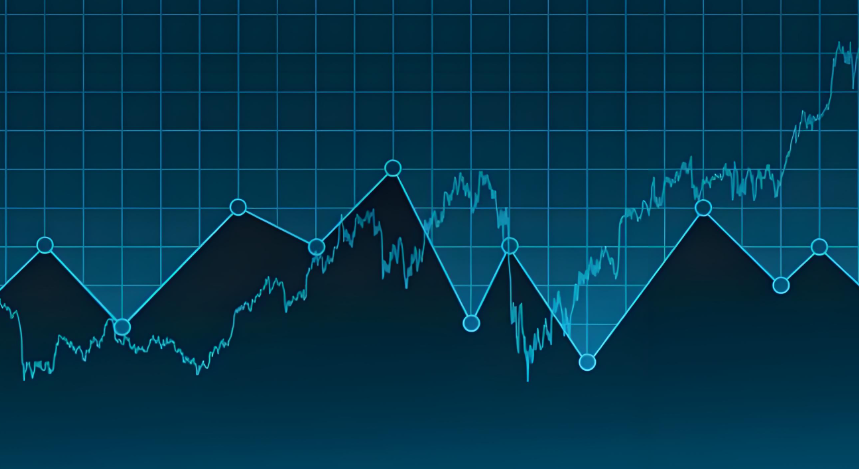U.S. Stocks Decline Across the Board
Advertisements
On December 18, local time, the three major U.Sstock indices, namely the Dow Jones Industrial Average, the S&P 500, and the Nasdaq Composite, experienced a significant downturn, with the Dow falling by 2.58%, the S&P 500 down by 2.95%, and the Nasdaq plummeting by 3.56%. Prominent tech and finance stocks such as Amazon, American Express, and Goldman Sachs each saw declines exceeding 4%. Notably, Tesla's shares dropped more than 8%, while Microsoft fell over 3%. In tandem, Chinese stocks listed in the U.Salso faced widespread losses.
Moving into the early hours of December 19, Beijing time, the Federal Reserve made a pivotal announcement, deciding to lower the benchmark interest rate by 25 basis pointsThis adjustment reduced the target range of the federal funds rate from 4.5%-4.75% to 4.25%-4.50%. This move marks the third consecutive rate cut since the Federal Reserve initiated its easing cycle in September 2024, bringing the total reduction to 100 basis points.
During the subsequent press conference, Federal Reserve Chairman Jerome Powell communicated various policy signals
He indicated that the Fed does not subscribe to any predetermined course regarding interest rates, emphasizing the central bank's flexibility in navigating economic challenges.
The rate cut, as confirmed by the Federal Reserve's announcement, was in line with market expectationsThe decision was propelled by the Committee's responsibility to support employment and manage inflation while maintaining economic stabilityPowell elaborated that the Federal Open Market Committee (FOMC) is determined to further decrease policy constraints by implementing this rate reductionAdditionally, the Fed has resolved to continue its strategy of gradually reducing its securities holdings.
Looking at inflation, Powell projected that core Personal Consumption Expenditures (PCE) in December might rise to 2.8%, suggesting a potential delay of one to two years before achieving the desired inflation target of 2%.
As Gennadiy Goldberg, head of U.S
- Korea's Central Bank Hints at Pausing Rate Cuts
- Surge in U.S. Tech Stocks!
- Embrace Long-Term Perspectives on Returns
- U.S. Stocks Decline Across the Board
- Resource ETFs Lead the Market
interest rate strategy at TD Securities, noted, the Federal Reserve has communicated its intent to be less dovish than in previous yearsHe interprets this as a sign that there may be fewer rate cuts next year, predicting that the market will price in fewer than two reductionsIn a similar vein, Sameer Shah, Chief Global Strategist at Principal Asset Management, described the rate cut as predictable given the significant revisions in economic forecastsHowever, it carries the weight of reluctance, designed to comfort the market while the Fed prepares for potentially stricter policy measures by 2025. He cautioned that there are no clear indicators necessitating aggressive policy stimuli amid looming inflation challenges from the newly incoming government.
In the aftermath of the interest rate announcement, the reaction in the stock market was immediate and dramaticThe major U.Sindices all reversed from initial gains to notable drops
By the market's close, the Dow had plunged by 2.58%, settling at 42,326.87 points, the S&P 500 dropped by 2.95% to 5,872.16 points, and the Nasdaq experienced a 3.56% decline to finish at 19,392.69 pointsThis 10-day losing streak for the Dow represents its longest fall since October 1974, raising concerns among investors.
The sell-off was particularly alarming in the tech sector, where the NASDAQ-100 Index, which includes seven prominent American tech giants, saw a 3.45% declineSpecific stocks faced severe setbacks: Tesla's shares plummeted more than 8%, Amazon fell over 4%, Microsoft's stock dropped more than 3%, while Google's Alphabet, Meta, Apple, and Nvidia also recorded significant reductions, ranging from 1% to over 3% losses.
Shifting focus to the bond market, the yield on the 10-year U.STreasury note reached its highest level since late May, climbing over 4%. Concurrently, the U.S

dollar index experienced a sharp rise, hitting a peak not seen since December 2022.
The global financial markets closely watched the Federal Reserve's critical rate decision, which reverberated like a stone cast into a still pond, creating ripples across various sectorsIn the commodities market, gold reacted sharply, experiencing a brief plunge of nearly $40, with its price sinking to $2,592.479 per ounce by 5:20 AM Beijing time, reflecting a 2.02% dropSilver also sustained heavy losses, with prices retracting over 3% to $29.443 per ounce.
In the contemporary investment climate, the persistent high valuation of U.Sequities is supported by two foundational pillarsOn one side, the acceleration of the industrial cycle continues to inject vitality into the market, as emerging technologies and industry transformations yield numerous investment opportunitiesOn the other hand, a stable macroeconomic environment acts as a solid base, instilling confidence among market participants
Post Comment